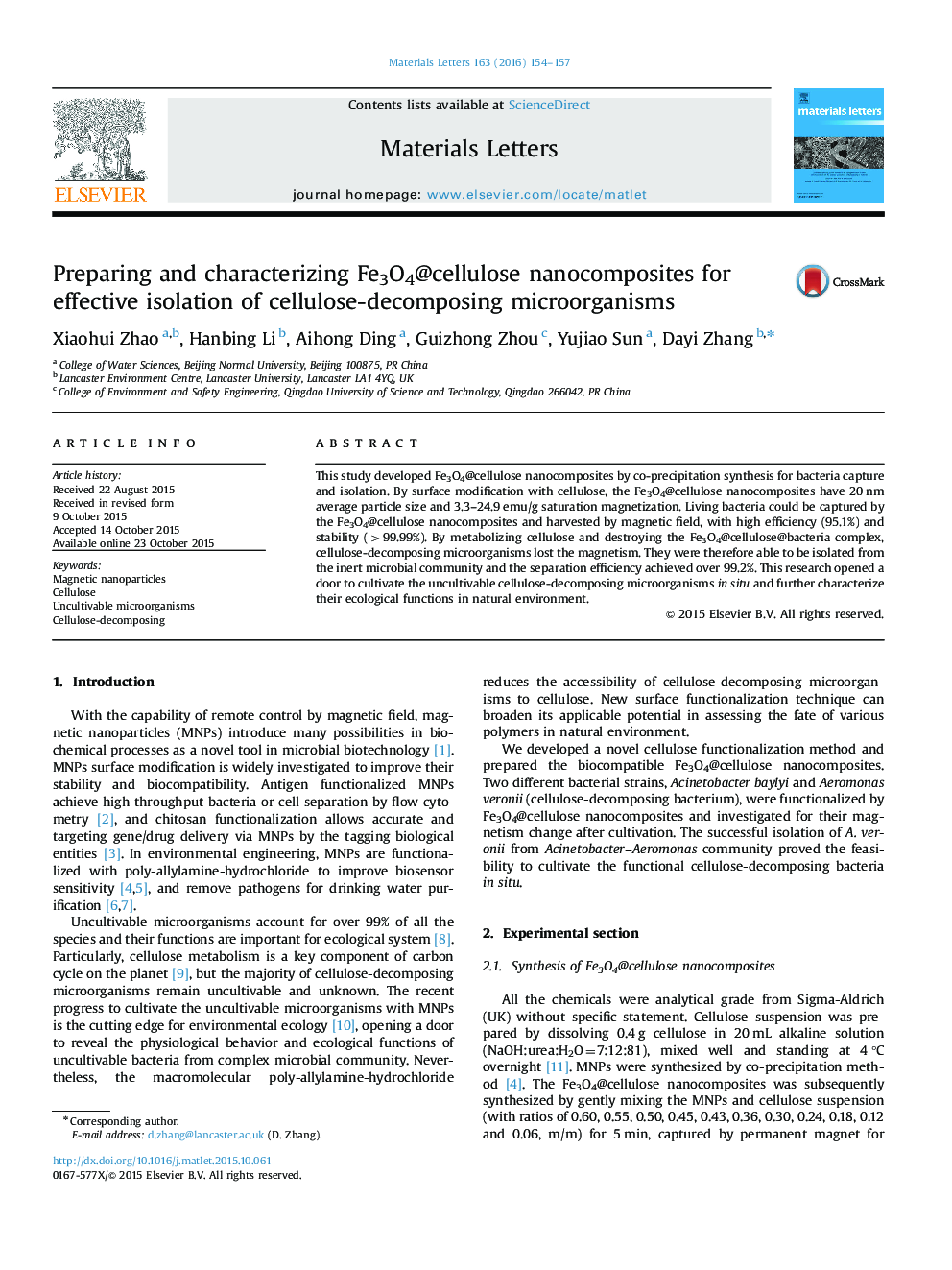| Article ID | Journal | Published Year | Pages | File Type |
|---|---|---|---|---|
| 1641761 | Materials Letters | 2016 | 4 Pages |
•Fe3O4@cellulose nanocomposites for cellulose-decomposing bacteria isolation.•Bacteria capture efficiency >95.1% and stability >99.99%.•Cellulose-decomposing bacteria separation efficiency over 99.2%.•Fe3O4@cellulose can identify unknown cellulose-decomposing microbes in situ.
This study developed Fe3O4@cellulose nanocomposites by co-precipitation synthesis for bacteria capture and isolation. By surface modification with cellulose, the Fe3O4@cellulose nanocomposites have 20 nm average particle size and 3.3–24.9 emu/g saturation magnetization. Living bacteria could be captured by the Fe3O4@cellulose nanocomposites and harvested by magnetic field, with high efficiency (95.1%) and stability (>99.99%). By metabolizing cellulose and destroying the Fe3O4@cellulose@bacteria complex, cellulose-decomposing microorganisms lost the magnetism. They were therefore able to be isolated from the inert microbial community and the separation efficiency achieved over 99.2%. This research opened a door to cultivate the uncultivable cellulose-decomposing microorganisms in situ and further characterize their ecological functions in natural environment.
Graphical abstractFigure optionsDownload full-size imageDownload as PowerPoint slide
